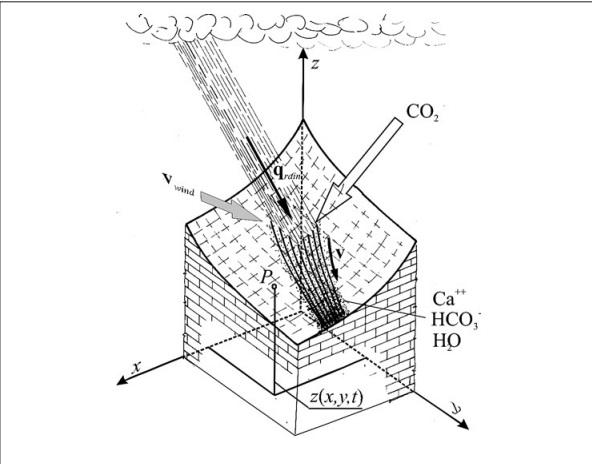A Theoretical Approach to Establish the Duration of Denudation on Limestone Surface
DOI:
https://doi.org/10.3986/ac.v34i1.276Abstract
V članku obravnavam hitrost kraške denudacije na primeru nagnjene apnenčaste plošče, neposredno izpostavljene dežju. Zanima me, kako je hitrost denudacije odvisna od parametrov kot so naklon površine, količina in intenziteta padavin ter smer in hitrost vetra. Odgovor poiščem v rešitvi diferencialne enačbe, ki opisuje hitrost zniževanja površine. Izkaže se, da se hitrost denudacije ne veča sorazmerno z intenziteto padavin in da nikoli ne preseže določene mejne vrednosti. Dolgotrajno deževje majhne intenzitete povzroča višjo denudacijsko stopnjo, kot niz kratkotrajnih padavin. Hitrost denudacije narašča s hitrostjo vetra, vendar le do določene hitrosti.
This paper deals with the question of how the duration of karstic denudation depends on the dip angle, the annual amount of precipitation, the rain intensity, and the prevailing wind direction and speed in case of an initially plane, sloping limestone surface without soil cover. The answer is given by the solution of a differential equation system describing the lowering speed of the rock surface. It turns out that the rate of the denudation does not increase in proportion to the intensity of precipitation and that it can never exceed a maximal value. Furthermore, long, soft rains result in higher annual denudation than short, abundant downpours. With increasing wind-speed the corrosion rate also increases, but above a certain wind speed the dissolution does not become faster. This paper presents numerical examples with diagrams about how these factors affect the expected duration of denudation.
Downloads

Downloads
Published
How to Cite
Issue
Section
License
Authors guarantee that the work is their own original creation and does not infringe any statutory or common-law copyright or any proprietary right of any third party. In case of claims by third parties, authors commit their self to defend the interests of the publisher, and shall cover any potential costs.
More in: Submission chapter




